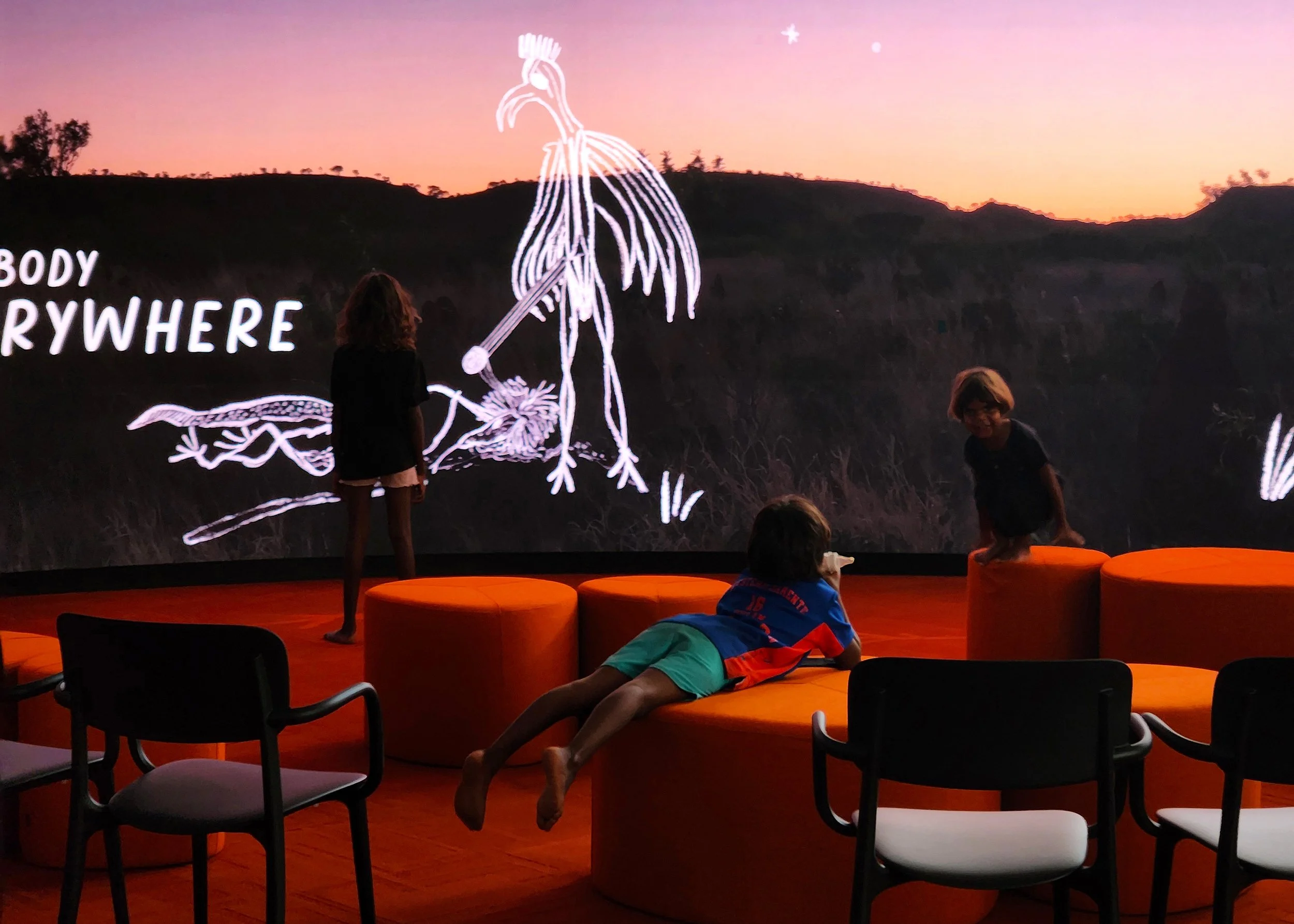FRD has completed Stage 2 (production, construction and installation) of Nyinkka Nyunyu Art and Culture Centre, including a new gallery, exhibition space. It is a community hub, preserving language and cultural practice, cross-generational learning and showcasing Warumungu history. Visitors are immersed in the story of this place, the culture and the deep, enduring connection to Manu (Country).
The design was guided throughout by the Warumungu Community, incorporating into the exhibition a strong sense of being on Country and connecting to the footsteps of their ancestors who have always walked here.
Stage 1 of the project (community consultation, content curation, exhibition design and multimedia production) to was undertaken from 2019-2024.








